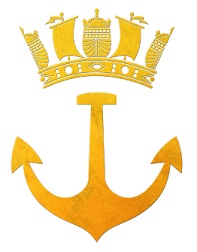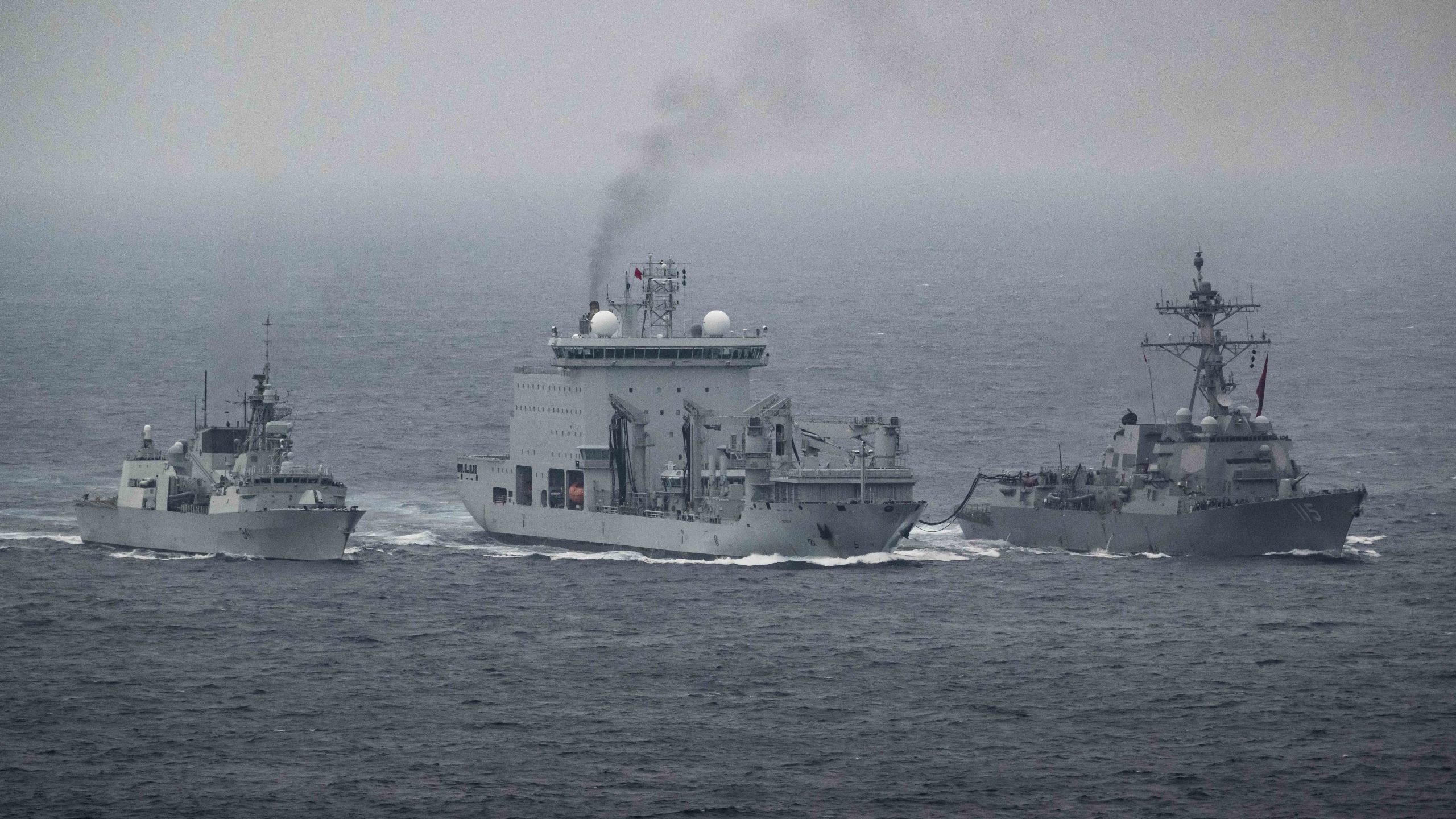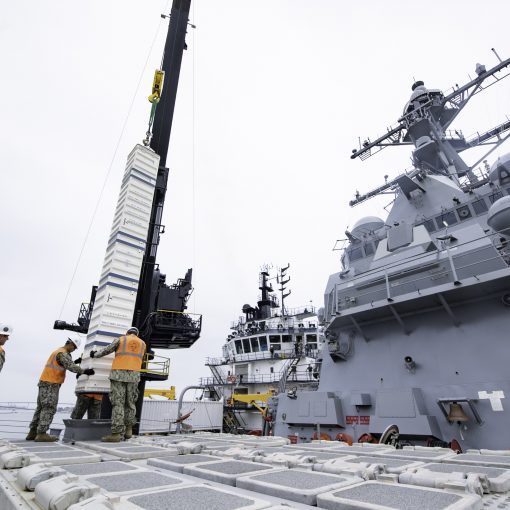By Dan Middlemiss, 9 August 2025
I came across this post by a prolific US blogger. The post reminisces about the old notion of the USN with a 1,000 ship navy, but promotes the idea that US allies might be able to contribute the missing ships to approach the 1,000 ship total. [Navy Matters, “The Thousand Ship Navy,” 4 August 2025. https://navy-matters.blogspot.com/2025/08/the-thousand-ship-navy.html]
Here are some excerpts (with emphasis added):
“Well … what if other navies around the world focused their efforts and force structures on the assets we’re missing. What if they built the minesweepers and SSKs, among other needs, that could fill the gaps and weaknesses in our Navy and we could call on those assets as needed?
Will some country’s couple of underarmed frigates make any difference? No, but large numbers of small ASW corvettes would be a big help.
The idea is that other countries would partner with the US to fill the gaps and weaknesses in our Navy.
Force Structure – Which country would build which assets? That can’t be left up to the individual countries. The individual contributions must come from analysis of the US Navy’s needs and, ultimately, be subject to US dictation. Otherwise, each country will build whatever suits them and the US gaps won’t be filled other than haphazardly, if at all.
Reciprocity – In return for, say, building mine warfare ships instead of frigates, participating countries must be supported by the US Navy for any legitimate defense needs. In other words, the US becomes the participating country’s navy against defined threats.
It should be made crystal clear that any country that opts not to participate is on their own if they find themselves threatened by an enemy. Participate and share or stand alone. A simple choice.
Finally, note that none of the above precludes any country from still building their own ships of whatever type as long as they meet their assigned gap-filling quota.”
Now, I agree that this post may well be nothing more than the fevered musings of yet another egocentric American. But I also know that many navy traditionalists in Canada believe that the US will eventually come to its senses and that Canada really has no realistic option but to cooperate closely with the US on defence, especially when so many of the RCN’s combat systems are US-made and US-supplied.
But it is not so clear that the political scene in the United States will be altered in any fundamental way in the near future. Indeed, there is potential that presidential successors could be just as scary as the current incumbent.
So, might we see a future in which the RCN’s gap-filling, quota-satisfying fleet is invited to join a US CVBG on Canada’s West Coast to quarantine Vancouver Island because the president is unhappy with the BC premier’s stance on softwood lumber?
Time will tell, but be careful what you wish for.
Image: HMCS Ottawa moves into position alongside MV Asterix prior to conducting a concurrent Replenishment at Sea (RAS) with USS Rafael Peralta during Indo-Pacific Deployment in the South China Sea on 6 October 2023. Photo Credit: Aviator Gregory Cole, Canadian Armed Forces Photo




2 thoughts on “The RCN’s Future in a Quasi-51st State?”
Dan Middlemiss’s recent Broadsides post on the “Thousand Ship Navy” leans heavily into provocation. His scenario of a U.S. carrier strike group quarantining Vancouver Island over softwood lumber isn’t a prediction, it’s political theatre designed to provoke a reaction. The danger is that the exaggeration risks obscuring a more nuanced and important question: how much influence should the U.S. have over Canadian naval planning?
The U.S. blogger he cites floated a concept where allies would focus on filling gaps in the U.S. Navy mine warfare ships, diesel-electric subs, ASW corvettes in exchange for U.S. naval support against defined threats. Non-participants would “stand alone.” It’s an unapologetically U.S.-centric view, but still hypothetical.
Middlemiss frames this as Canada becoming a “quasi-51st state,” with Washington dictating ship types and missions. That’s an overreach. Canada currently sets its own force structure and is not bound to U.S. procurement quotas. The U.S. cannot legally compel us to build to its specifications.
The RCN is deeply integrated with U.S. systems and logistics, missiles, sensors, and combat systems, creating practical dependency.
NATO capability targets are negotiated, but allied political pressure can be intense, particularly in wartime.
In a major conflict (e.g., with China), Washington could apply heavy pressure to shift Canadian procurement toward U.S. operational needs.
A U.S. CVBG blockading part of Canada over a trade dispute is not a realistic outcome under any current legal, political, or military framework. Presenting it as a near-term risk blurs the line between satire and disinformation.
The real strategic issue isn’t about “standing alone” or becoming a “51st state.” It’s about striking the right balance between interoperability and sovereignty, making sure the RCN can operate seamlessly with the U.S. and NATO without letting foreign priorities quietly dictate our own fleet composition. That means maintaining a diversified capability set and investing in sovereign supply and maintenance capacity.
Middlemiss’s deliberate provocation makes for a memorable read, but it risks leaving readers with an exaggerated sense of inevitability. The real challenge is more subtle and more within Canada’s power to control than his satire suggests.
I think any discussion of foreign influence on Canada’s defence structure needs to go beyond that of only USA, and consider the current military alliances in which Canada has agreed to participate with other countries. I believe this means not only NORAD but also NATO. NORAD by definition is not about naval force structure, so let’s consider NATO.
I believe in this regard there is a NATO Defence Planning Process (NDPP). I believe the process begins with the North Atlantic Council (NATO’s highest political decision-making body) setting political guidance. This guidance outlines the alliance’s overall strategic objectives and the types of operations NATO should be prepared to conduct. This in turn has an influence on each NATO state’s force structure and contributions.
Then based on this political guidance, NATO’s military commands conduct a detailed analysis to determine the “Minimum Capability Requirements.” This is essentially a comprehensive list of the forces, equipment, and capabilities (e.g., air defence, logistics, special forces, etc.) needed to meet the alliance’s objectives.
These requirements are then “apportioned” among the member states. The goal is to set “Capability Targets” for each NATO member state, specifying on a more force structure basis as to what they should contribute to the collective defence effort. This is done with the principles of “fair burden-sharing and reasonable challenge” in mind.
For certain, NATO does not dictate the exact equipment a NATO member state must buy, but rather it sets targets in capability terms (e.g., a certain number of deployable brigades or air transport assets). This allows Allies to find solutions while ensuring their contributions are aligned with NATO’s needs as best possible within their agreed commitments.
I believe the same, to perhaps a lessor extent, applies to force structure, for a range of capabilities, such as:
– Anti-Submarine Warfare (ASW)
– Air Defence
– Power Projection (such as aircraft carriers & amphibious assault ships)
– Mine Countermeasures
– Logistics and support
These requirements are then “translated” into targets of individual member states to attempt to meet. Again, these are not rigid commands, but are designed to be commitment goals for member states to achieve.
In my opinion, in Canada funding of the military has been a major constraint. For the past half century, the Canadian navy has not had the luxury of massive defence funds to simply ‘go its own way’ without thinking of what it needs to provide to NATO, and I believe this applies also to warship procurement and commitment.
There are times, when I read articles about what Canada’s navy could do next, that I feel that many in their articles sometimes overlook that Canada has an alliance with NATO, and given that alliance, it is best to ensure Canada’s naval force structure is consistent with agreed NATO requirements. Else, why bother with an alliance if alliance forces can not properly complement each other in the joint force structure?
So – in terms of this post and thread, Canada does provide contributions for aspects outside of strict boundaries of not only Canada’s territorial defence. And Canada’s military force structure is NOT to meet the narrow aspect of USA defence goals only, but rather it is to be consistent with all of Canada’s military alliances, that being both NORAD and NATO, and more specifically NATO.